 Leading Blog | Posts by Month |
 Leading Blog | Posts by Month |
01.31.25

LeadershipNow 140: January 2025 Compilation
See more on
Posted by Michael McKinney at 08:01 AM
01.30.25

Leading Thoughts for January 30, 2025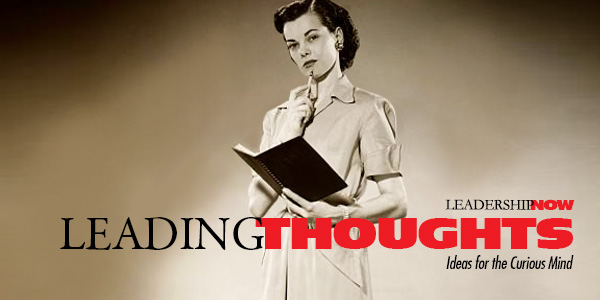
IDEAS shared have the power to expand perspectives, change thinking, and move lives. Here are two ideas for the curious mind to engage with: Retired Navy SEAL commander Rich Diviney on empathy: “A lack of empathy in any leader obviously is a huge detriment huge detriment. But too much empathy can be just as damaging. It’s hard to be productive if you’re functioning at the whim of other people’s emotions. Empathy is an invaluable tool, so long as it is properly calibrated.” Source: The Attributes: 25 Hidden Drivers of Optimal Performance Nikos Mourkogiannis on purpose: “Purpose is preparation for doing what is right and what is worthwhile. As such it creates a sense of obligation. But this obligation is not a weight or a drag in any way—it’s a way of knowing what you can and can’t do. Because Purpose provides certainty, it also provides confidence. All of that comes together to contribute to a firm’s competitive advantage. ‘Do the right thing and do well’—a new way of saying ‘Do well by doing good.’” Source: Purpose: The Starting Point of Great Companies Look for these ideas every Thursday on the Leading Blog. Find more ideas on the LeadingThoughts index.
Posted by Michael McKinney at 12:32 PM
01.27.25

Surviving the 9 Traps of Winning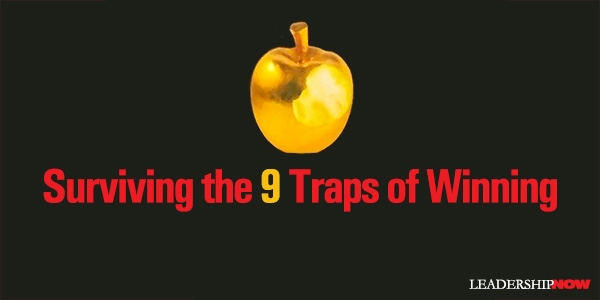
IT IS ALWAYS a challenge to change the way you think. And success can make it that much harder. In Seduced by Success, Robert Herbold observes that “whether you are talking about individuals, small groups, or large organizations, success generates the risk of falling prey to the mindset of becoming proud, to being very comfortable with your current practices, and to losing your sense of urgency.” Instead of building on your successes, you become complacent, repeating what you have always done. The “legacy of success is too often failure.” As Peter Drucker wrote, “Success always makes obsolete the very behavior that achieved it. It always creates new realities. It always creates, above all, its own and different problems. Only the fairy tale ends, ‘They lived happily ever after.’” Here are nine traps that we face to help us put our past success into perspective and become “trapped in the exhilaration of the present.” Trap #1: Neglect: Sticking with Yesterday’s Business Model Things change. What you did yesterday does not guarantee success tomorrow. Every component of your business plan needs to be objectively examined for potential vulnerabilities. “It’s very important that your people understand that part of their job is to spot vulnerabilities and to make a lot of noise in bringing them to people’s attention so that you can take action.” At the same time, focus on what is working well. “What we should be doing is broadening the impact of what is working and adding new but related capabilities. What is important is to develop a culture that constantly asks the questions: ‘Where do we go from here with what is working? How do we broaden and deepen the impact of what is working?’” Trap #2: Pride: Allowing Your Products to Become Outdated Success can cause you to believe that you don’t have to do all of the dirty work that is required to stay ahead. You need to always be growing and improving over and over again to keep up with the demands of the marketplace and an ever-changing world. This slow, painful slide into irrelevance happens to successful products when their management succumbs to those three basic human tendencies: loss of urgency, a proud and protective attitude, and an entitlement mentality. Thoroughly focus on the next big thing. Pride often makes it difficult to think realistically about what is really happening in people’s minds and in the marketplace. Herbold cautions that the measure of success that you are currently using regarding your product or service may no longer be relevant in a changing world. Going forward, you may need to evaluate things differently. Trap #3: Boredom: Clinging to Your Once-Successful Branding After It Becomes Stale and Dull Keeping your brand fresh and contemporary is hard work. Once you become successful and think you have it all figured out, it is natural to sit back and reap the rewards. Know what your brand stands for and relentlessly reassess how it is carried out in all of the details of its execution. “You will want to protect the elements of your brand that you know have made you successful in the past. On the other hand, you’ve got to be objective about what the marketplace is saying and adjust accordingly.” Trap #4: Complexity: Ignoring Your Business Processes as They Become Cumbersome and Complicated Successful organizations often reward themselves by adding more and more people but allowing processes to become complex and fragmented. “They then reorganize into smaller groups to get as much clarity of responsibility as possible, but this often leads to unproductive fragmentation of processes that should be carried out organization-wide.” Processes can take on a life of their own. It is good to rotate people through assignments so they are less defensive about changes to processes they were once wedded to. Trap #5: Bloat: Rationalizing Your Loss of Speed and Agility Success usually means adding more and more people, which can create fragmentation and slow down decision-making. The bloat that success brings makes it very hard to react quickly to change. Complexity, duplication of functions, and bureaucracy set in. It is wise to use fresh talent to expand your perspective when moving into new areas or revamping what you have been doing. Use top talent and get out of their way. “One lesson I learned,” writes Herbold, “from both P&G and Microsoft, is that once you get great people on board and have them fired up, the worst thing you can do is to encumber them with bureaucratic committees, task forces, clearance processes, and other busywork that simply gums up the work.” Real leadership is the key to speed and agility. “It is important to cut your losses and move on when things aren’t working. That requires real leadership.” Trap #6: Mediocrity: Condoning Poor Performance and Letting Your Star Employees Languish Success can keep us from doing the hard things that brought us success in the first place. Many successful organizations treat people well, but they also treat them all the same. “While many companies take pride in this approach, the problem is that the superstars don’t get stretched, and the poor performers don’t get confronted.” Sometimes, it can be best to bring in fresh talent. “Fresh talent is especially effective when business practices have become routine and when the organization is falling behind the competition. Nothing uncovers opportunities quite like a new set of eyes.” Trap #7: Lethargy: Getting Lulled into A Culture of Comfort, Casualness, and Confidence There is a tendency for both individuals and organizations to become complacent, believing that they have all the answers, and to become casual about the things they should be urgent about. We can become defensive about any second thoughts about what we have always done, becoming arrogant and close-minded. When an organization has been working well for a while, it is not uncommon to see the leadership begin to nurture a retirement-home culture. “Its characteristics are slow, consensus-oriented decision making, comfort, ambiguity, casualness, confidence, and lack of aggressive behavior in general.” Clogged arteries. Organizations need to have an outward focus. It’s easy to get complacent when your focus is internal—especially internal comfort and satisfaction. Trap #8: Timidity: Not Confronting Wars, Infighting., and Obstructionists With success often comes the fragmentation into fiefdoms. “These entrenched division managements fight off any attempts to initiate significant change that might disrupt their fundamental comfort.” When all else fails, reorganize to dismantle the fiefdoms and get people back to basics. Trap #9: Confusion: Unwittingly Providing Schizophrenic Communications Clear communication is critical for the continued success of an organization. The words and deeds need to align, and when they don’t, confusion sets in. “Always give the employees a description of the current status of things, the desired outcome, and clear expectations of what should take place in the future.” Avoiding the 9 Traps of Success The key to avoiding the nine traps of success is having the humility to ask questions—a questioning attitude. Success breeds a culture of lack of urgency, satisfaction, excessive pride, a protective attitude toward the way things have been done in the past. Success also encourages an entitlement mentality that assumes that since you’ve done well in the past, that will always be the case. So, remember two things. First, be as aggressive as you were when you were on your way up. Second, develop a culture that always asks questions, probing for new and better ways to do things. 
Posted by Michael McKinney at 03:21 PM
01.24.25

The Illusion of Innovation (and Escaping the Efficiency Trap)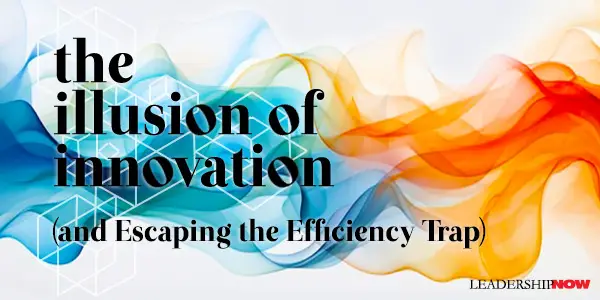
ORGANIZATIONS are better managed than ever before. They have been optimized for safety, security, stability, and control. But what we need going forward is dynamic and, yes, inefficient. What is needed now is some deliberate chaos. In The Illusion of Innovation, author Elliott Parker believes that the focus on capital efficiency makes companies less capable of making big innovation bets that progress society because those bets have an uncertain payoff. The problem is that managing for predictability negates learning and progress. They are optimized for the wrong outcomes—predictability, not learning. The result is the illusion of innovation and progress while sacrificing resiliency. Over the long run, resilience beats efficiency and is, therefore, a more productive objective for scaled organizations. Innovation can (and should) be directed at both efficiency and resilience. Still, the pendulum often swings too far to efficiency, which produces organizations that are extraordinarily fragile and subject to shocks. The challenge is that our scaled organizations are optimized for the preservation of what already exists, not for building the new. Inefficiency creates learning. Corporations waste money and time on innovation efforts that destroy value. Efficient and scaled organizations may make fewer mistakes but have fewer insights. To correct this, they try to “repurpose their existing operating system—designed for efficient, scaled execution—to do something it was never designed to do: operate with a degree of inefficiency to create learning. Clayton Christensen wrote, “The worst place to develop a new business model is from within your existing business model.” There are circumstances when an organization should look externally to create innovation. “Scaled companies are organized to execute. If an opportunity presents an execution challenge—when you know what to do and just need to do it—pursue it internally. Scaled companies are not organized to learn, so if an opportunity presents a learning challenge—when there’s a high degree of ambiguity about how to proceed—the opportunity is more likely to be successful if pursued outside the corporation.” Executing on a learning challenge only reinforces and perpetuates what you are already doing, creating the illusion of innovation. What about the admonition for organizations to act like a startup? The answer is not to act like a startup but to learn to collaborate with outside experts and startups. Many corporate executives are tempted to look at startup successes and instruct their teams to act more like a startup. For most corporations, this would be a terrible mistake—despite the many well-known successes, most startups fail. Corporate strength lies in coordination, not nimbleness, and in efficiency of execution, not speed. An organization that is resilient requires a certain degree of inefficiency, randomness, serendipity, and exploration. “Fragility, on the other hand, results from too much focus on efficiency and is often the output of a top-down, hierarchical organizational structure over time.” But all of this exploration and experimentation is a process with constraints. It is essential to link strategy and constraints. Innovation is unlikely to succeed if the strategic bounds are not established and agreed upon. An organization’s leaders must determine where the organization will play and how it will win. All good strategies are controversial because they represent real choices. Yes, innovators should seek novelty, but within the constraints of the organization’s available resources and stated strategy. The most valuable experiments are those that are likely to create findings that lead to experiments, that generate findings that challenge the status quo—within strategic constraints. 
Posted by Michael McKinney at 02:20 PM
01.23.25

Leading Thoughts for January 23, 2025
IDEAS shared have the power to expand perspectives, change thinking, and move lives. Here are two ideas for the curious mind to engage with: Coach Phil Jackson on compassion: “Compassion for all beings—not least of all oneself—is the key to breaking down barriers among people. Now, ‘compassion’ is a word not often bandied about in locker rooms. But I’ve found that a few kind, thoughtful words can have a strong transformative effect on relationships, even with the toughest men on the team.” (Blog Post) Source: Eleven Rings: The Soul of Success Coach Tony Dungy on putting people first: “Instead of asking, how can I lead my company, my team, or my family to a higher level of success? We should be asking ourselves, how do others around me flourish as a result of my leadership? Do they flourish at all? How does my leadership, my involvement in their lives—in whatever setting we’re in—have a positive and lasting influence and impact on them?” Source: The Mentor Leader: Secrets to Building People and Teams That Win Consistently Look for these ideas every Thursday on the Leading Blog. Find more ideas on the LeadingThoughts index.
Posted by Michael McKinney at 08:09 AM
01.22.25

Connections: The New Currency of Our Era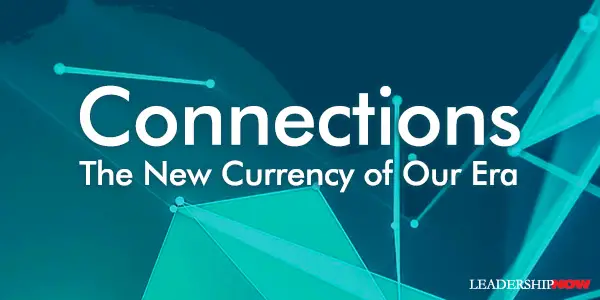
THE challenges organizations face today are becoming increasingly complex, interconnected, and unpredictable. Yet, as we examine these challenges more closely, a striking realization emerges: most are rooted in connection issues. Network science heralded as the science of the 21st century, provides a groundbreaking framework for understanding connections. It uncovers profound insights into the structural and functional challenges organizations encounter, offering a transformative lens for leadership in this era of complexity. To thrive, leaders must embrace a new paradigm that prioritizes the power of connections. Let’s explore two critical domains where connections are paramount: innovation and talent management. Innovation Is a Connection Issue Innovation is no longer a choice — it’s a necessity for survival. Organizations must continuously evolve to remain relevant in a world where rapid technological advancements, globalized competition, rising customer expectations, sustainability imperatives, and the accelerating pace of change are redefining the landscape. Businesses face relentless pressure to create new products, services, and experiences. The speed of change, coupled with shrinking product lifecycles, demands an ever-present focus on reinvention. But true innovation — transformative, game-changing innovation — requires more than resources or technical expertise. It requires connections. True Innovation Requires Novel Connections Innovation doesn’t arise in isolation. It emerges when existing components — technologies, ideas, or processes — are combined in novel ways. Breakthroughs happen at the intersections. Consider these examples: • Netflix disrupted the entertainment industry by integrating streaming technology with a subscription-based model, reimagining how content is consumed. • The iPhone combined touchscreens, mobile internet, and portable media players to create a seamless, revolutionary device that reshaped industries. These innovations weren’t about inventing entirely new technologies. They were about creating connections — linking ideas and resources in ways others hadn’t imagined. For innovation to flourish, leaders must create environments where connections thrive. This means fostering diverse teams, building networks that bridge silos, and nurturing cultures where collaboration is encouraged. By connecting people, ideas, and resources across boundaries, leaders can ignite fresh thinking and unlock transformative breakthroughs. Talent Management Is a Connection Issue Talent is the lifeblood of any organization. Yet, in today’s digital age, retaining top talent has never been more challenging. With alternative employment opportunities more visible and accessible than ever, organizations must prioritize creating environments where employees feel valued, engaged, and connected. The pressure to retain talent is more urgent than ever. Employee expectations have shifted. Today’s workforce seeks more than just a paycheck — they seek purpose, belonging, and meaningful connections. Organizations that fail to meet these needs risk losing their best people to competitors who can. Retention depends on high-quality connections. Studies show that a sense of belonging is at the heart of employee retention. A Harvard Business Review study found that fostering belonging reduces turnover by 50 percent, increases job performance by 56 percent, and cuts sick days by 75 percent. A Gallup study revealed that employees with a best friend at work are seven times more likely to be engaged. When individuals feel connected to their teams, their leaders, and the broader organization, they’re more likely to stay and perform at their best. Strong workplace connections foster trust, boost morale, and create a shared sense of purpose, all of which are critical for engagement and retention. The Leadership Imperative Leaders play a pivotal role in fostering these connections. By investing in team building, encouraging collaboration, and cultivating a culture of inclusion, leaders can create workplaces where employees thrive. Prioritizing connections isn’t optional — it’s a strategic necessity that directly impacts organizational performance and success. Connections Are Central to Organizational Success Beyond innovation and talent management, many other organizational challenges, such as supply chain coordination, AI implementation, cross-functional collaboration, and team performance, are also deeply rooted in connection issues. This should come as no surprise. Network science reveals that all complex systems are, at their core, networks. Organizations, being complex systems, are no exception. Networks are simple in structure yet extraordinarily powerful. They comprise: Nodes: In human networks, these are individuals. Connections: The links between them, such as communication channels. Interactions: The flows that occur between nodes, such as information exchange or collaboration. The strength and quality of these connections determine the effectiveness of the network — and, by extension, the organization. The Network Science Message for Leaders Network science offers a revolutionary insight for leaders: Focus on connections — the space between people. Stronger connections lead to stronger networks, which in turn drive better organizational outcomes. Whether addressing innovation, talent management, or operational challenges, leaders who prioritize building and strengthening connections unlock their organization’s full potential. Transitioning to Network Leadership: Mastering Connections To truly harness the power of connections, leaders must master both the art of small, close-knit connections and the art of large, systemic connections. Small connections: Small teams, typically composed of four to five members, consistently outperform larger teams. Why? Because smaller teams foster higher-quality connections, enabling superior engagement, trust, and performance. These teams are where the work gets done. Large connections: While small connections excel at execution, they risk losing sight of the bigger picture. Large gatherings, on the other hand, cultivate a sense of belonging, enhance cross-functional collaboration, and create the conditions for serendipity and breakthrough innovation.. Magic lies in mastering both the art of small and large connections. Leaders must create environments where small teams can thrive while ensuring the organization as a whole remains interconnected, inspired, and aligned. The path forward for leadership in the 21st century is no longer about command and control; it’s about connection and collaboration. The leaders who excel in this new era will be those who understand the power of networks and use them to drive innovation, engagement, and performance. By focusing on connections — strengthening the space between people — leaders can create organizations that are not only resilient and adaptive but also capable of achieving extraordinary outcomes. The future belongs to those who master the art of connection. 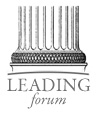 
Posted by Michael McKinney at 01:33 PM
01.18.25

Learn to Take Time to Take Time to Change
HOW do you start your day? Is it hitting snooze 4 times before you reluctantly crawl out of bed, accepting your fate of another day? Or, are you on the other side of the spectrum, waking up at 4 am in order to ‘win the day,’ hitting the gym and grabbing a quick post workout bite before most people are even awake? Maybe you are a night owl work late and take your coffee black at 2 pm. Whatever your daily routine, it may be time to look at it with a fresh pair of eyes and an intention to change something. Most people make the mistake of going big where change is concerned. The quintessential example of this is the night owl, with trouble waking up before 8 am, setting a goal to wake up early, maybe at 6:30 am every day, hoping it will help them become the person they always wanted to be. Assuming they’re like most, they might succeed in this endeavor for a few days, maybe even a week or two, but as is the way with most resolutions, they will eventually revert back to old habits. Soon, one day will turn into two, and before they know it, months have gone by and they are making the same promise all over again. Unfortunately, continually repeating the same failing scenario produces a negative feedback loop that permits people to talk disparagingly to themselves, e.g. you suck; you really should get out of bed on time and quit being a bum. The negative feedback becomes a detriment to self-image, and as studies show, a negative self-image can affect everything from how much you earn, to the quality of friends you keep, to what you eat, and to what you allow into your body. In short, your negative self-talk creates a negative self-image, which potentially creates harmful self-sabotage. Change is Coming Whether it’s to start the year on a positive footing, or choose to make changes when the time is right, here are 3 tips on how to move forward based on who you already are and who you hope to become. Tip #1: Start small Rather than being the night owl who suddenly aims to wake up at 6 am, essentially trying for a 180 degree turn in lifestyle and schedule, aim lower. Your resolution could be to go to bed 1 hour earlier, stop watching TV 2 hours before bed, or maybe sleep-in late one day a week. So often we pick solutions based on the equivalent of “cheat codes” in video games. Rather than putting in the time to become a person who constantly gets a great night of sleep, we foolishly plug in a habit (code) that some guru swears will make us successful. Instead, let your changes be small, incremental improvements based on where you are now. Waking up at 6 am can still be your long term goal, but by setting an initial target to go to bed an hour earlier in month 1, then once you have this down adding 10 minutes of stretching in month 2, and so on, you’ll not only find it easier to eventually wake up at 6 am, you’ll find that by making small incremental adjustments along the way, you secretly architected a new lifestyle, making the big goal much easier to achieve. Tip 2: View your habits as investments in yourself, not as a checklist you will be graded on One year, I made a resolution to quit drinking. Still in my late 20s, and coming out of a recent divorce, I’m sure I don’t have to tell you it didn’t last long. Eventually, I got there (3 years later), but it wasn’t easy. Part of the trouble was allowing one lapse in behavior to fuel another. When a buddy would ask, “you want a beer?” it was so much easier to say yes when I already had a drink the night before, my excuse usually being, “sure, I drank yesterday, it’s not like I can go back and undo that.” Part of my underlying logic was based on keeping score. Losing yesterday meant I had already blown getting a perfect record, so there was no real harm doing it again. It wasn’t until I read the 5 am Club, by Robin Sharma, and started viewing my habits as investments in myself and my life, that I really started to make progress. Saying no to a beer wasn’t about some arbitrary checklist on which I was keeping score for and with myself. Rather, it was a decision to invest in myself; saying “no” meant I’d have more energy the next morning to do the things I cared most for. Tip 3: When in doubt, start your day doing the thing you love for at least 30 minutes I love to read and I love to learn new things. Therefore, I start every day by brewing my favorite mushroom coffee, sitting down with a book on the subject I currently want to learn more about, and then losing myself in both the coffee and the book for at least 30 minutes. Sometimes, I read about business and investing. Other times, I learn about color in art and the history of pigments. Recently, I’ve been mixing in books on flying, since I’m currently working on getting my pilots’ license. By starting my day with my favorite things, this daily habit helps me get out of bed and also stay focused on what I want, instead of getting sucked into social media or other form of distraction. Maybe you love yoga or weight lifting. Or maybe you don’t yet know what you love. If that’s the case, start by taking 30 minutes a day to explore things you might be interested in. Eventually, you’ll find something that brings you joy, improves your opinion of yourself, and helps you get out of bed, eager to learn more about it.
Sean McMann was recruited right out of college to work at one of the largest data firms, and then embarked on an eight-year journey from new grad to consulting director. Privileged to see behind the curtain of some of the largest corporations today, he recognized the system was broken and quit at the height of his career, when working the least but making the most money he ever had, betting everything, including his money, reputation, and time, on trying to fix the problem of the corporate jungle. He shares his insights in his new book, Hacking the Corporate Jungle: How to Work Less, Make More and Actually Like Your Life. When he's not writing, researching, and speaking, McMann spends his time riding his bike, visiting art museums, snowboarding, and playing with his two young sons. Learn more at seanmcmann.com.
Posted by Michael McKinney at 05:42 PM
01.17.25

Leading Thoughts for January 16, 2025
IDEAS shared have the power to expand perspectives, change thinking, and move lives. Here are two ideas for the curious mind to engage with: Joel Kurtzman on leadership: “The leader is not separate from the group he or she leads. Rather, the leader is the organization’s glue—the force that binds it together, sets its direction, and makes certain that the group functions as one. Good leaders are not outsiders who cheer on a group. They are part of that group, integrated deeply into its fabric and emotional life. Connecting with the group you lead means demonstrating you are part of the group, understand its challenges, can do its jobs, and can stand the pressure and the heat.” Source: Common Purpose: How Great Leaders Get Organizations to Achieve the Extraordinary Greg Satell on identifying a keystone change: “To create real change, change that sticks and won’t be soon reversed, you need to identify a fundamental issue that encapsulates the value of the mission—a keystone change that is concrete and tangible, unites the efforts of multiple stakeholders, and paves the way for greater change. Revolutions don’t begin with a slogan—they begin with a cause. Source: Cascades: How to Create a Movement that Drives Transformational Change Look for these ideas every Thursday on the Leading Blog. Find more ideas on the LeadingThoughts index.
Posted by Michael McKinney at 12:14 PM
01.09.25

Leading Thoughts for January 9, 2025
IDEAS shared have the power to expand perspectives, change thinking, and move lives. Here are two ideas for the curious mind to engage with: Jack Trout on being a doer: “The best leaders know that direction alone is no longer enough. The best leaders are storytellers, cheerleaders, and facilitators. They reinforce their sense of direction or vision with words and action.” Source: The Power of Simplicity: A Management Guide to Cutting Through the Nonsense and Doing Things Right Jack Welch on simplicity: “For a large organization to be effective, it must be simple. Insecure managers create complexity. Real leaders don’t need clutter. People must have the self-confidence to be clear, precise, to be sure that every person in their organization—highest to lowest—understands what the business is to achieve. But it’s not easy. You can’t believe how hard it is for people to be simple, how much they fear being simple. They worry that if they’re simple, people will think they’re simple-minded. In reality, of course, it’s just the reverse. Clear, tough-minded people are the most simple.” Source: Noel Tichy and Ram Charan: Speed, Simplicity, Self-Confidence: An Interview with Jack Welch, Harvard Business Review Look for these ideas every Thursday on the Leading Blog. Find more ideas on the LeadingThoughts index.
Posted by Michael McKinney at 07:56 AM
01.02.25

Leading Thoughts for January 2, 2025
IDEAS shared have the power to expand perspectives, change thinking, and move lives. Here are two ideas for the curious mind to engage with: Brian Tracy on zero-based thinking: “To simplify your life, zero-based thinking is one of the most powerful strategies you can learn and apply on a regular basis. Here’s how it works. Ask yourself, ‘Is there anything I am doing right now that, knowing what I now know, I wouldn’t get into again if I were starting over today?’” Donald Miller on creating meaning: “We build lives of meaning by stating an ambition, by enduring challenges, and by sharing our lives with others. The single characteristic that sets heroes apart is that they are willing to accept a challenge that will ultimately transform them. Heroes take action, which is why they are so good at experiencing meaning.” Source: Hero on a Mission: A Path to a Meaningful Life Look for these ideas every Thursday on the Leading Blog. Find more ideas on the LeadingThoughts index.
Posted by Michael McKinney at 11:15 AM
01.01.25

First Look: Leadership Books for January 2025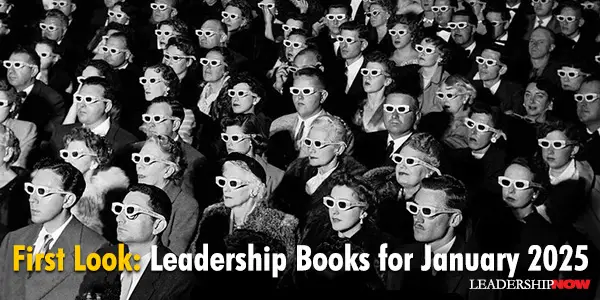
HERE'S A LOOK at some of the best leadership books to be released in January 2025 curated just for you. Be sure to check out the other great titles being offered this month.
There are more pieces of digital data than there are stars in the universe. This data helps us monitor our planet, decipher our genetic code, and take a deep dive into our psychology. As algorithms become increasingly adept at accessing the human mind, they also become more and more powerful at controlling it, enticing us to buy a certain product or vote for a certain political candidate. Some of us say this technological trend is no big deal. Others consider it one of the greatest threats to humanity. But what if the truth is more nuanced and mind-bending than that? In Mindmasters, Columbia Business School professor Sandra Matz reveals in fascinating detail how big data offers insights into the most intimate aspects of our psyches and how these insights empower an external influence over the choices we make. With passion and clear-eyed precision, Matz shows us how to manage psychological targeting and redesign the data game. Mindmasters is a riveting look at what our digital footprints reveal about us, how they're being used—for good and for ill—and how we can gain power over the data that defines us.
Changing how we work can feel overwhelming. Like trying to budge an enormous boulder. We’re stifled by the gravity of the way we’ve always done things. And we spend so much time fighting fires—and fighting colleagues—that we lack the energy to shift direction. But with the right strategy, we can move the boulder. In Reset, Heath explores a framework for getting unstuck and making the changes that matter. The secret is to find “leverage points”: places where a little bit of effort can yield a disproportionate return. Then, we can thoughtfully rearrange our resources to push on those points.
Whether you’re a leader, a member of a team, a spouse, or a parent, this engaging and rigorous exploration unpacks the science of inspiration. Through compelling stories, fascinating research, and practical tips for addressing the common dilemmas we face daily, Inspire reveals how all of us, regardless of status or circumstance, can be more inspiring more often. Social psychologist and leadership expert Adam Galinsky has spent three decades building a method for determining when we are inspiring versus infuriating, and where various leaders—presidents, CEOs, coaches, teachers, parents, and a wealth of others—currently land on that spectrum. .
In an era where the foundational elements of business are being disrupted, Essential emerges as a crucial guide for leaders navigating the profound changes reshaping industries and markets worldwide. This book, penned by a team of seasoned business and leadership strategists, offers a radical and necessary perspective on management transformation, emphasizing the importance of human-centered leadership in meeting the full potential of the technology age. Essential is not just a book; it's a roadmap for 21st-century leaders facing existential challenges in a rapidly evolving global market. Perfect for managers, executives, directors, founders, entrepreneurs, and any business leader aiming to steer their organization towards success in a transformed landscape, this book provides the tools and insights needed to lead with conviction and humanity. Whether you're looking to redefine your leadership approach, adapt to the transformed market, or leave a lasting legacy, this book offers a compelling case for why now is the time for a leadership reinvention.
Business is on the cusp of a profound transformation. Conventional work models are failing to adapt to the evolving needs and expectations of the modern workforce. Simultaneously, the emergence of disruptive technologies such as artificial intelligence, coupled with web3 innovations, including the metaverse and decentralized work models, is unlocking a new realm of possibilities. It raises the question: Is the era of traditional employment over? The tools of tomorrow will amplify human potential, from collaborating in virtual spaces through digital avatars, to managing transactions transparently on blockchain. Those who embrace these technologies—and the ways people want to work—will unleash unprecedented levels of productivity and innovation. But those who don't risk losing out on the best talent, and even becoming obsolete.
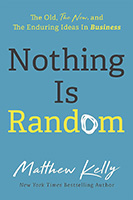  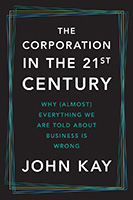 
“You can't think well without writing well, and you can't write well without reading well. And I mean that last "well" in both senses. You have to be good at reading, and read good things.” — Paul Graham, Y Combinator co-founder
Posted by Michael McKinney at 02:40 PM
|
BUILD YOUR KNOWLEDGE
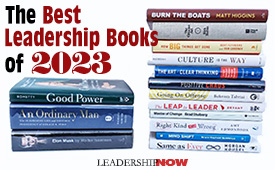
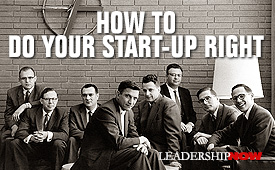
How to Do Your Start-Up Right STRAIGHT TALK FOR START-UPS 
Grow Your Leadership Skills NEW AND UPCOMING LEADERSHIP BOOKS 
Leadership Minute BITE-SIZE CONCEPTS YOU CAN CHEW ON 
Classic Leadership Books BOOKS TO READ BEFORE YOU LEAD |
|